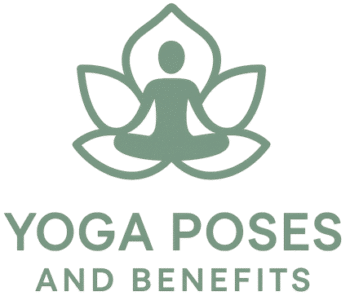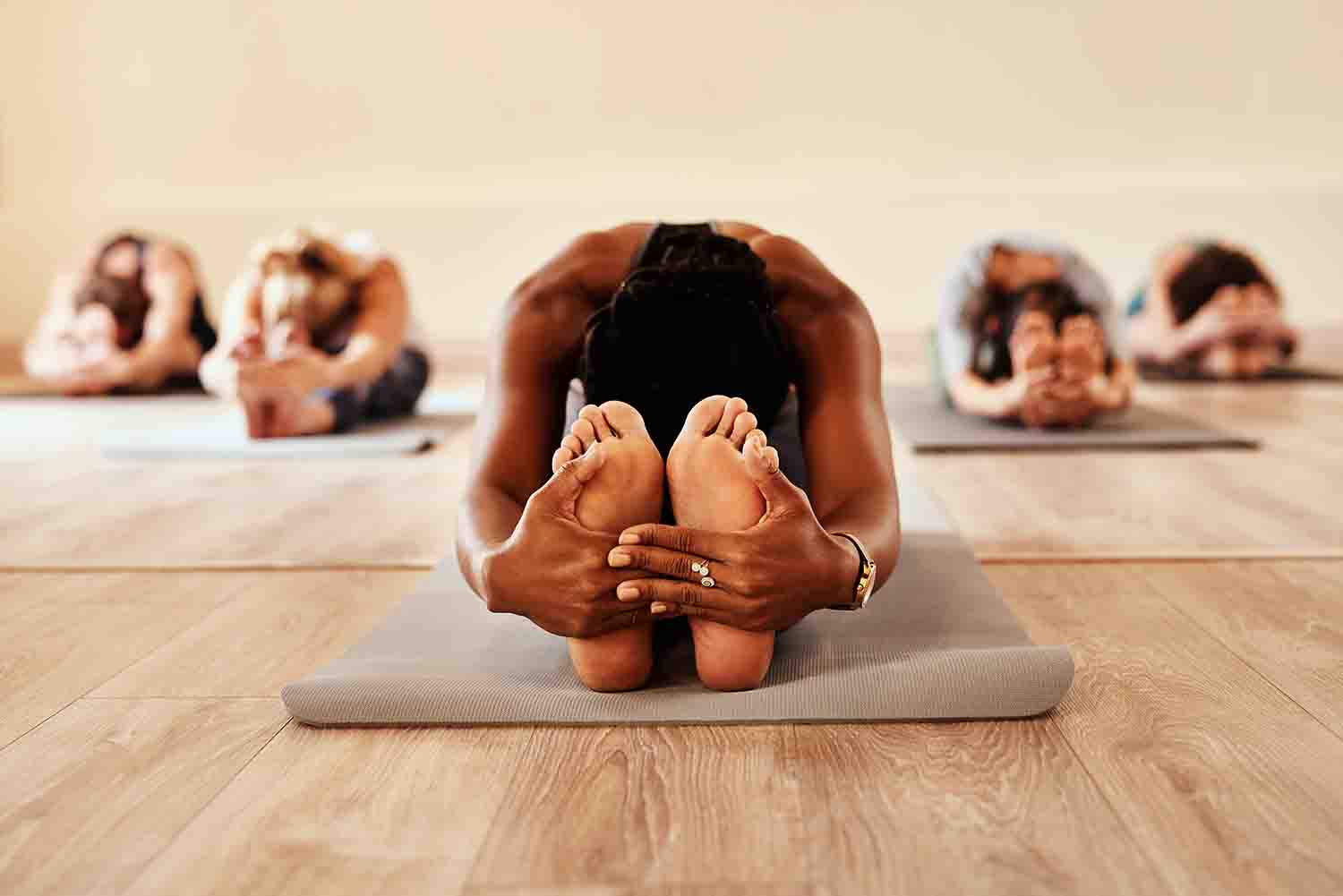Yin yoga is a deeply meditative practice focusing on long-held, passive poses that target deep connective tissues like ligaments, joints, and fascia. Unlike dynamic styles, yin emphasizes stillness, creating space to release tension while improving flexibility and mobility.
Key Features of Yin Yoga:
- Long Holds: Poses are typically held for 3–5 minutes, encouraging deep tissue activation and fostering patience.
- Low Muscle Engagement: The practice relies on gravity, allowing muscles to relax fully and connective tissues to stretch effectively.
- Mindful Awareness: Incorporates breathwork and meditation, supporting a calm mind and emotional clarity.
Yin yoga complements more active practices by balancing energy and cultivating inner stillness. It’s ideal for those seeking to improve joint health, reduce stress, or deepen their mind-body connection.
This quiet, introspective style promotes relaxation and self-awareness, making it perfect for practitioners of all levels. Beginners benefit from the slower pace, while advanced yogis enjoy its restorative benefits. Props like bolsters, blocks, and blankets enhance comfort and support alignment.
The Philosophy Behind Yin Yoga
The philosophy of yin yoga centers on balance, introspection, and surrender. Drawing from Taoist principles, it emphasizes harmonizing opposing forces: yin represents stillness, passivity, and receptivity, while yang embodies activity and dynamism. Practicing yin yoga encourages embracing these natural contrasts to cultivate equilibrium in the body, mind, and spirit.
Core Principles of Yin Philosophy:
- Stillness as Strength: Holding postures for extended periods fosters patience and deep relaxation.
- Connection to Nature: Aligning with the flow of life mirrors the rhythms of the natural world.
- Acceptance over Striving: Releasing control promotes self-awareness and inner peace.
This practice teaches practitioners to observe without judgment. By remaining in poses and exploring physical sensations, individuals develop mindfulness and emotional resilience. Focusing on connective tissues rather than muscular engagement enhances flexibility and energy flow, reflecting the Taoist belief in the meridian system.
Integrating breathwork and meditation deepens the connection to the present moment. Unlike vigorous yoga styles, yin creates a contemplative space where growth arises through stillness.
The Benefits of Yin Yoga
Physical Benefits of Yin Yoga
Yin yoga offers unique physiological benefits by targeting deep connective tissues and promoting joint health. This practice enhances flexibility, mobility, and overall well-being through passive, long-held poses.
Key Benefits:
- Improved Flexibility: Yin yoga lengthens fascia and connective tissues, increasing range of motion over time. Holding poses for several minutes allows tissues to stretch gradually and safely.
- Joint Health: By gently stressing joints and ligaments, yin yoga helps maintain lubrication and elasticity. It also enhances the circulation of synovial fluid, which supports joint function.
- Tension Release: Passive postures relieve muscle tension, especially in areas like hips, lower back, and shoulders. This practice is particularly effective for addressing stiffness caused by prolonged sitting or repetitive activities.
- Enhanced Circulation: Sustained poses encourage blood flow to targeted areas, nourishing tissues and aiding recovery.
- Connective Tissue Strength: Yin strengthens tendons and ligaments by applying gentle stress, which fosters resilience over time.
- Posture Improvement: Focused stretching realigns the body, improving balance and reducing strain caused by poor posture.
Mental and Emotional Benefits
Yin yoga creates a profound mental and emotional impact by promoting relaxation, mindfulness, and self-awareness. This meditative practice encourages practitioners to explore their inner world, fostering clarity and emotional resilience.
Key Mental Benefits:
- Stress Reduction: Holding poses for extended periods calms the nervous system, reducing cortisol levels and promoting a state of deep relaxation.
- Enhanced Focus: Staying present during long holds cultivates concentration, improving overall mindfulness in daily life.
- Quieting the Mind: Yin yoga’s meditative nature allows thoughts to settle, creating mental space and clarity.
Emotional Growth:
- Emotional Release: Prolonged stillness often uncovers suppressed feelings, enabling practitioners to process and let go of emotional tension.
- Resilience Building: Facing discomfort in poses strengthens the ability to remain calm under pressure, fostering emotional stability.
- Self-Compassion: Yin encourages accepting one’s limitations without judgment, nurturing kindness and patience toward oneself.
How to Begin a Yin Yoga Practice
Setting Up Your Practice Space
Designing a tranquil space for yin yoga enhances focus and relaxation. A thoughtful environment supports the meditative nature of this practice.
Essentials for Your Space:
- Quiet Area: Select a peaceful spot free from distractions. Silence devices and reduce noise for undisturbed focus.
- Comfortable Surface: Use a non-slip yoga mat for stability. Add a soft rug or blanket underneath for added support.
- Soft Lighting: Dim lighting or candles create a calming atmosphere. Natural light is ideal during the day.
Key Props and Accessories:
- Bolsters and Blocks: These props provide support during long-held poses and prevent discomfort.
- Blankets: Use for extra cushioning or warmth during practice.
- Straps: Assist in maintaining alignment and extending reach in certain poses.
Enhancing the Experience:
- Aromatherapy: Scents like lavender or sandalwood promote relaxation.
- Background Music: Play soft instrumental music or embrace silence to focus inward.
- Accessible Setup: Arrange props nearby to make adjustments seamless.
Beginner-Friendly Yin Yoga Poses
Embarking on a yin yoga journey introduces practitioners to poses that gently stretch and strengthen the body. Here are some beginner-friendly yin yoga poses to consider:
- Child’s Pose (Balasana): This restful posture gently stretches the hips, thighs, and ankles, promoting relaxation and stress relief.
- Butterfly Pose (Baddha Konasana): Sitting with the soles of the feet together and knees dropped to the sides opens the hips and groin, enhancing flexibility.
- Caterpillar Pose (Seated Forward Fold): Extending the legs forward and folding the torso over them stretches the hamstrings and lower back, encouraging introspection.
- Sphinx Pose: Lying on the belly and propping the upper body on the forearms creates a gentle backbend, stimulating the lower spine and improving posture.
- Dragon Pose (Low Lunge): Stepping one foot forward into a lunge position deeply opens the hip flexors and quadriceps, aiding in releasing tension.
Is Yin Yoga Suitable for Everyone?
Yin yoga can benefit most individuals, but it requires mindful consideration of personal needs. It suits practitioners seeking deep relaxation, flexibility, or stress relief. However, those with acute injuries or limited mobility should modify poses accordingly.
Key Considerations:
- Flexibility Levels: Beginners can use props like bolsters or blocks to ease into poses.
- Health Conditions: Consult a healthcare provider before starting if chronic pain or joint issues are present.
- Body Awareness: Listen to physical signals to avoid strain or discomfort during long holds.
By adapting postures, yin yoga becomes accessible to nearly everyone.
Why is a Consistent Practice Important?
A consistent yin yoga practice fosters gradual physical, mental, and emotional transformation. Repeating poses regularly enhances flexibility by gently stretching connective tissues over time. Commitment also supports joint health, reducing stiffness and improving mobility.
Why Yin Yoga is a Quiet Contemplative Practice
Yin yoga embodies stillness, introspection, and mindfulness, making it a deeply contemplative practice. Its emphasis on long-held, passive poses fosters a sense of inner calm and allows practitioners to explore the subtleties of their physical and mental states.
Looking for more information on yin yoga meridians?
Yin yoga meridians are energy channels rooted in Traditional Chinese Medicine (TCM) philosophy. These pathways, similar to the concept of nadis in yoga, transport energy (known as “qi”) throughout the body. Each meridian corresponds to specific organs and influences physical, emotional, and mental health.
Are you a teacher? Learn how to create a yin yoga class for stress relief. Yin yoga effectively manages stress by engaging both the body and mind in a deeply restorative practice. The prolonged poses allow the parasympathetic nervous system to activate, shifting the body from a state of stress to one of relaxation. This calming effect reduces cortisol levels, helping the nervous system reset and promoting a sense of balance.

